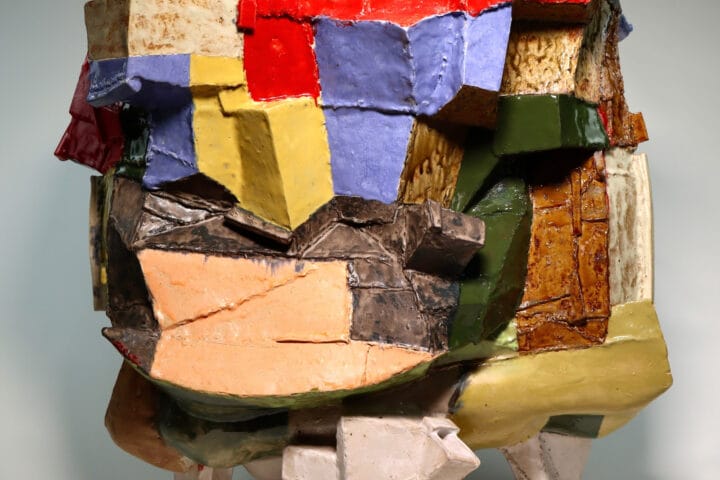The 14th Gwangju Biennale, titled soft and weak like water hosted by the Gwangju Biennale Foundation (President, Yang-woo Park) and the Gwangju Metropolitan City, opens to the public on April 7, running through to July 9, 2023.
On the occasion of the opening, Yang-woo Park, President of the Gwangju Biennale Foundation states, “We hope that the 14th Gwangju Biennale will foster novel discourses in contemporary art and culture. We look forward to Gwangju, Asia, and the international community coming together and collaborating during this esteemed 94-day event celebrating contemporary art.”
The 14th Gwangju Biennale welcomes visitors, including domestic and international art enthusiasts, throughout the city of Gwangju, renowned as South Korea’s city of art. The main exhibition, titled soft and weak like water, is curated by Sook-Kyung Lee, Artistic Director of the 14th Gwangju Biennale. Concurrently, the Gwangju Biennale Foundation has teamed up with global art institutions to showcase the Gwangju Biennale Pavilion. Through these two presentations, the 14th Gwangju Biennale delves into the role of art in present-day concerns and portrays the distinct values and influence that art holds.
Powerful Messages of Resistance and Coexistence within the Aesthetics of Simplicity and Restraint
soft and weak like water takes its inspiration from a chapter of Dao De Jing which speaks of water’s capacity to embrace contradictions and paradoxes. The Biennale proposes to imagine our shared planet as a site of resistance, coexistence, solidarity and care by thinking through the transformative and restorative potential of water as a metaphor, a force, and a method. soft and weak like water features 79 artists from around the world, representing different generations, cultural backgrounds, and regions. A diverse spectrum of artists, including established and emerging talents, women, minorities, and indigenous artists, offer layered and eclectic perspectives.
The Biennale presents powerful messages of resistance, deconstruction, decolonization, ecology, and the environment, while also providing a space for solidarity, contemplation, inclusivity, and recovery. The exhibition guides the viewer through various rhythms, with a strong yet lyrical composition that emphasizes the aesthetics of restraint emerging from a profound sense of depth. This structure reflects the characteristics of water, which can embrace diversity and contradictions.
In addition to the central venue, the Gwangju Biennale Exhibition Hall, works are located in, and resonate with, the architectural, historical, and cultural context of exhibition spaces across Gwangju, such as the Gwangju National Museum, Mugaksa, Artspace House, and Horanggasy Artpolygon.
Gwangju Biennale Pavilion, experiencing art from around the world in Gwangju
The 14th Gwangju Biennale features pavilions presented in collaboration with prestigious cultural and art institutions from around the world. This year’s event is the largest in its history, injecting the city of Gwangju with a vibrant, global contemporary art scene.
Initiated in 2018 to promote cultural exchange between Korean and international art institutions, the Gwangju Biennale Pavilion had three participating institutions in 2018 and two in 2021. The pavilions at this year’s Gwangju Biennale include nine countries in total: Canada, China, France, Israel, Italy, the Netherlands, Poland, Switzerland, and Ukraine, making it the largest since it first launched. With rising interest, the global art community is expected to unite around Gwangju, affirming the city’s reputation as a hub of arts and culture.
Each pavilion will address contemporary discourses related to topics such as climate issues, cultural heritage, and marginalized communities, while interacting with the main exhibition soft and weak like water and working in dialogue with local public art museums, alternative spaces, and private art galleries.
The pavilions are scheduled to hold their opening ceremonies from April 5 to April 8. The LeeKangHaArtMuseum, Eunam Museum of Art, Yangrim Gallery, Gwangju Media Art Platform, Dong-gok Art Museum, Gwangju Museum of Art, Gallery Podonamu, Yangnim Salon, Leeleenam Studio, and the Asia Culture Center serve as the local collaborating institutions and exhibition venues.
The 14th Gwangju Biennale opening ceremony
The Gwangju Biennale Foundation will hold an opening ceremony on April 6th at 6 PM (Korea Standard Time) in the outdoor plaza in front of the Gwangju Biennale Exhibition Hall.
The official ceremony will proceed in the following order: the opening declaration by Gwangju Biennale Foundation President Yang-woo Park, a welcome speech by the Mayor of Gwangju Metropolitan City, and a congratulatory speech by the Minister of Culture, Sports, and Tourism. This will be followed by the appointment ceremony of actor, singer, and Super Junior member Siwon Choi as an honorary ambassador, an overview of the exhibition and introduction to the Biennale’s participating artists, eventually culminating in the Gwangju Biennale Park Seo-bo Art Prize ceremony.
One of the most anticipated moments of the opening ceremony is the Gwangju Biennale Park Seo-bo Art Prize, which will be presented for the first time at the 14th Gwangju Biennale to one of the participating artists of the 14th Gwangju Biennale. The winner will receive a golden dove emblem (the dove is the official bird of Gwangju Metropolitan City) and a cash prize of 100,000 USD.
Coinciding with the opening, the Gwangju Biennale Foundation and Hyundai Tate Research Centre: Transnational present the 14th Gwangju Biennale’s symposium Confluences: Stories of Art and the Planetary taking place on 7 and 8 April at Geosigi Hall. For the duration of the Biennale, public programs inviting audience participation are planned to take place at various venues across Gwangju.
Websites:
www.gwangjubiennale.org
www.14gwangjubiennale.com
www.gwangjubiennalepavilion.org












